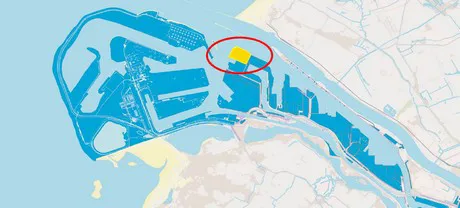Rotterdam is expanding its position as the largest Western European through port for agricultural and fishing products. Part of this strategy is setting up the Rotterdam Food Hub on the Caland Canal at the entrance of the Maasvlakte. The company terrain measuring 60 hectares is being special set up to optimally facilitate companies from the 'agrofood' sector. Half of 60 hectares of company terrain next to the Maasvlakte is the subject of talks with interested parties.

Agrofood is a growing market due to the increase in population and wealth, especially in rising economies. After the United States, the Netherlands is the largest agricultural exporter in the world. In 2017 almost €92 billion was traded. This is part of the reason that the Rotterdam port is the market leader in Western Europe with 16 million tonnes of turnover per year.
Speed is crucial
"We want to further accommodate the growth of our customers in agrofood," adds Emile Hoogsteden, director of Containers, Breakbulk & Logistics on the Havenbedrijf Rotterdam. "The Rotterdam Food Hub offers this opportunity: not only are the large deep sea container terminals on the Maasvlakte a stone's throw away, but the Rotterdam Food Hub will also be given multiple spots for sea freight ships specially set up for chilled storage." There will also be spots for inland ships and the warehouses will be directly on the docks, which means that chilled and frozen loads can be stored, processed or transported quickly. "We work with perishable goods in agrofood, so speed is crucial," according to Hoogsteden.
Breaking ground
Of the 60 hectares around 45 hectares is available for giving to companies. 35 hectares of this is the subject of talks between interested parties. Preparatory work such as soil research took place this spring and the construction of a road and utilities for the construction will take place from June. As of July the first customer will break ground for the development of the terrain also known as the 'Head of the Bear'. The first companies will be operational here at the end of 2020.
Bananas, onions and... herrings
Rotterdam is by far the largest important and export port in Western European in the area of agrofood. As far as import is concerned the top 3 is formed by citrus, bananas and grapes. A lot of juices also find their way to the consumer through Rotterdam. As far as export is concerned it is vegetables, onions and potatoes that form the top, followed by pork, poultry products, cheese, outdoor plants and herring. The country that Rotterdam exports most agrofood to is China. Most of the products for import come from South Africa, Brazil and Costa Rica.
Source: Port of Rotterdam
